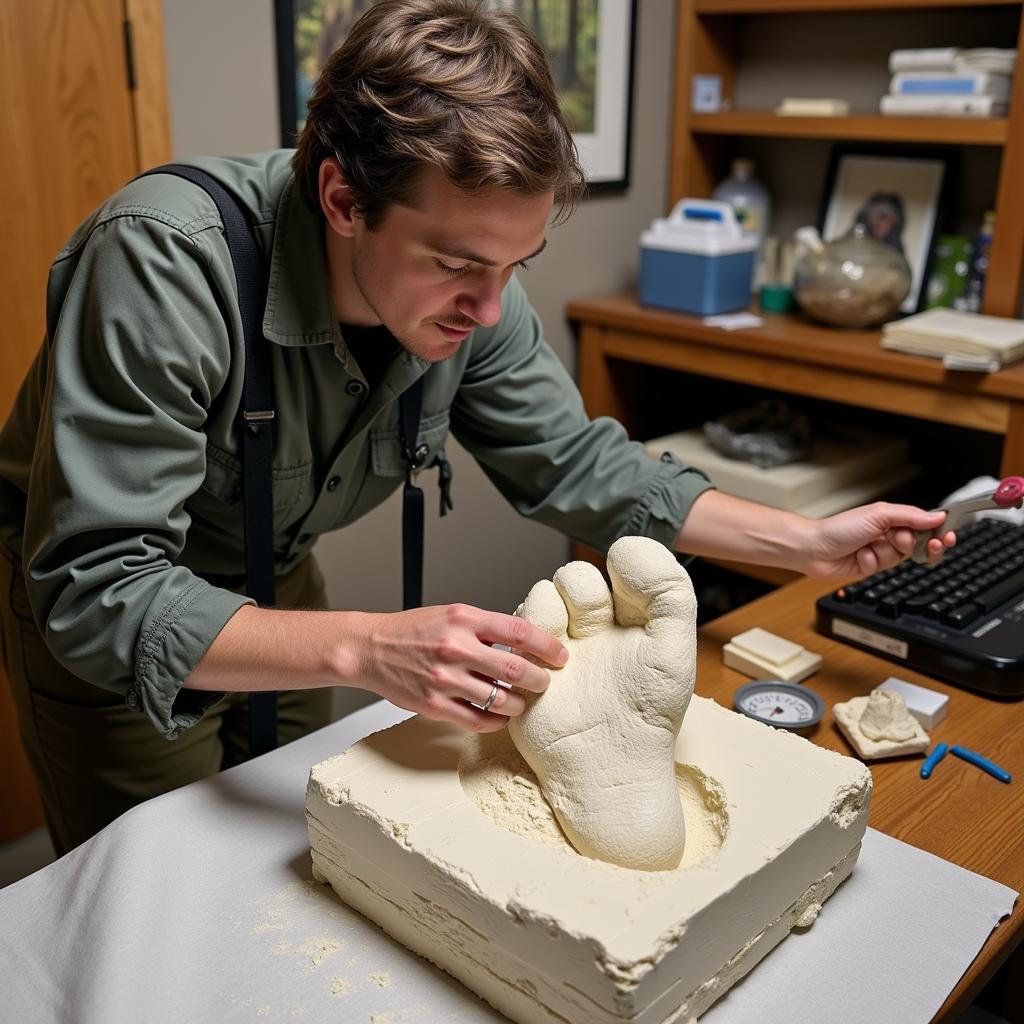The shadowy forests of the Pacific Northwest hold a secret that has captivated imaginations for generations: Bigfoot. This elusive creature, also known as Sasquatch, is said to roam the wilderness, leaving behind tantalizing footprints and glimpses of a hulking, hairy figure. Bigfoot Researchers, driven by a thirst for the unknown, dedicate themselves to uncovering the truth behind this enduring enigma.
The Allure of the Unknown: What Drives Bigfoot Researchers?
Driven by a potent blend of scientific curiosity and a sense of adventure, Bigfoot researchers embark on a quest for answers in a world dominated by skepticism. They are drawn to the challenge of proving the existence of a creature that has long been relegated to the realm of myth and folklore.
For some, the pursuit is deeply personal, fueled by childhood stories or a fascination with the unexplained. For others, it’s a scientific endeavor, an attempt to apply rigorous methodology to a subject often shrouded in hearsay and speculation.
The Tools of the Trade: How Bigfoot Researchers Search for Evidence
The quest for Bigfoot is not for the faint of heart. It demands patience, resilience, and a willingness to embrace the unknown. Researchers employ a variety of techniques to document evidence:
- Footprint Casting: Plaster casts of alleged Bigfoot tracks provide valuable data on foot size, gait, and weight distribution.
- Audio Recording: Highly sensitive microphones are used to capture potential vocalizations, from low rumbles to high-pitched whistles.
- Camera Trapping: Motion-activated cameras strategically placed in areas of reported sightings hope to capture that elusive, definitive image.
- Hair and Tissue Analysis: Any biological samples found are meticulously collected and analyzed for DNA evidence that could provide concrete proof.
Debunking the Myths: Separating Fact from Fiction in Bigfoot Research
While the pursuit of Bigfoot has captured the public’s imagination, it has also attracted its share of skepticism and even ridicule. It’s crucial to distinguish between genuine research efforts and sensationalized claims that lack scientific rigor.
Reputable Bigfoot researchers adhere to strict ethical guidelines, prioritize evidence-based analysis, and are transparent about their methods and findings. They are also quick to acknowledge the possibility of misidentification or hoaxes, recognizing that not every footprint or blurry photo is proof of a hidden primate.
The Future of Bigfoot Research: Embracing Technology and Collaboration
As technology advances, so too do the tools available to Bigfoot researchers. Drones equipped with high-resolution cameras offer a bird’s-eye view of the landscape, while thermal imaging can detect heat signatures even in dense vegetation.
 Analyzing a Bigfoot Footprint Cast
Analyzing a Bigfoot Footprint Cast
Collaboration is also key. Researchers are increasingly sharing data, comparing findings, and working together to analyze evidence from different geographic locations. This collaborative spirit fosters a more rigorous and scientifically sound approach to the study of Bigfoot.
Conclusion: The Search Continues
The search for Bigfoot continues to captivate and intrigue. Whether driven by a passion for the unknown, a desire to challenge conventional thinking, or a belief that science can unlock the secrets of the natural world, Bigfoot researchers are united by a common goal: to unravel one of the most enduring mysteries of our time.
While the debate over Bigfoot’s existence rages on, one thing is certain: the allure of the unknown and the quest for answers will continue to fuel the imaginations of researchers and enthusiasts alike for generations to come.
FAQs About Bigfoot Research
1. What is the most compelling evidence for Bigfoot’s existence?
While there is no definitive proof, footprint casts, audio recordings, and eyewitness accounts continue to fuel the debate.
2. Why hasn’t Bigfoot been captured on camera?
Proponents argue that Bigfoot is highly intelligent and elusive, adept at avoiding human contact.
3. Is Bigfoot research considered a legitimate scientific field?
While not a formally recognized field, it incorporates elements of biology, anthropology, and ecology.
4. What are the biggest challenges faced by Bigfoot researchers?
Funding, skepticism, and the difficulty of obtaining conclusive evidence in remote and challenging terrain are ongoing hurdles.
5. Where is the best place to look for Bigfoot?
The Pacific Northwest of North America is a hotbed of reported sightings, but Bigfoot lore exists worldwide.
Need Help with Your Own Research?
Contact us at:
Phone Number: 0904826292
Email: research@gmail.com
Address: No. 31, Alley 142/7, P. Phú Viên, Bồ Đề, Long Biên, Hà Nội, Việt Nam.
Our team is available 24/7 to assist you. We also offer a range of resources including information on clinical research jobs houston, oil and gas research, and women’s health research grants.
Interested in learning more about the paranormal? Check out our articles on research medical center reviews and the latest on the salary for clinical research coordinator positions.